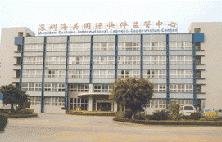UPS announced today it is moving its intra-Asia air hub from the Philippines to Shenzhen in China’sthriving Pearl River Delta to improve customer service by reducing transit times across Asia.
UPS said it has also added five weekly flights in and out of Nagoya to enhance customerservice to Japan’s Chubu region, a major industrial manufacturing center. UPS already flies toTokyo and Osaka. The new flights offer significant new options to Chubu industry to reach the restof Asia and the United States.
UPS will base the new intra-Asia hub at the Shenzhen Airport in southern China, near HongKong. The repositioning will slash at least a day off shipment times-in-transit for Asian customerswhile offering a new level of service to the manufacturing region located just north of Shenzhen.The new cost-efficient hub will be operational in 2010 and represents an estimated investment ofUS$180 million.
“Shenzhen’s strategic location will provide significant advantages, allowing UPS to betterserve the growing Asian markets along these rapidly expanding trade lanes,” said Dan Brutto,president, UPS International. “For example, we expect a full day’s improvement in transit time onalmost 200 city pairs once this hub opens.
“We want to be where our customers need us most,” Brutto added. “Since we began flyingdirectly to China in 2001, we have watched this region grow exponentially not only from a smallpackage perspective but also in heavy air freight.”
Currently, the markets of China, Hong Kong, Japan, Korea and Taiwan account for more thanhalf of UPS’s total intra-Asia volume. Of this, a sizeable proportion of Asia package export volumenow originates in southeast China and Hong Kong.
“Given the growth in shipping along the southern rim of China, it now makes more sense tosort and dispatch this volume from a hub closer to our customers,” explained Brutto. “And in makingthe switch, because of the growth we’re seeing, we intend to build a new sorting hub in Shenzhenwith five times the capacity of the existing hub. UPS is very grateful to the Shenzhen governmentand Shenzhen Airport Authority for their strong support of our expansion and we look forward to asuccessful partnership.”
Since taking direct control of its international express operations inside China in 2005, UPShas made significant investments in the country. In 2007, UPS signed an agreement with the ShanghaiAirport Group to establish a UPS International Air Hub at Pudong International Airport in Shanghai.When it opens in November, the Shanghai hub will connect China to the UPS global air network,including U.S. and European destinations. It thus will play a substantially different role than thehub in Shenzhen, which will connect all major Asian points.
The Shenzhen hub, expected to total about 89,000 square meters in size (almost 1 millionsquare feet), will include an express customs handling unit, sorting facilities, cargo handling andcargo build-up areas and ramp handling operations. It will be capable initially of processing up to18,000 pieces per hour – compared to the existing 7,500 pieces per hour in the Philippines – butcan be easily expanded to a capacity of 36,000 pieces per hour. It will employ about 400 people.
UPS long has pursued a multi-hub strategy to ensure the highest levels of air service in Asiawith existing facilities in the Philippines, Taiwan, Hong Kong and Singapore. The hub in thePhilippines, located in Pampanga at the former Clark Air Force Base, opened in 2002 and became thesite for a large sorting facility to handle packages destined for other points in Asia. The otherthree hubs generally handle volume moving in or out of Asia to North America and Europe.
The existing facility at Clark will continue to be a strategic location for UPS’s multi-hubnetwork in Asia. In addition to Clark’s role as the main import and export gateway for thePhilippines, UPS also is exploring placing alternative operations there. As an employer that valuesits employees and with a strong tradition of promoting from within the company, UPS is identifyingalternative employment opportunities within the UPS network for those who will be affected by thetransition.
The new flights to Japan are the result of a U.S.-Japan aviation agreement signed inSeptember 2007, which granted UPS the authority to operate daily flights between the U.S. andNagoya in addition to its daily services to Tokyo and Osaka. UPS will operate five weekly MD-11flights from Anchorage through Nagoya’s Central Japan International Airport before heading toShanghai in China.
“The start of UPS flights to Nagoya will allow UPS to gain an even stronger foothold in Japanand increase transportation options for the various industries in Chubu,” said Brutto. “With ourdiverse product portfolio and worldwide network, UPS is well-positioned to support Japanesebusinesses interested in trading in global markets.”
Most recently in Japan, UPS expanded its facility in Shinkiba in central Tokyo to provideimproved services to customers seeking integrated logistics solutions. Streamlined brokerage andbonded logistics services at the Shinkiba hub increased operational efficiency and improvedcustomer service by shortening delivery times.












